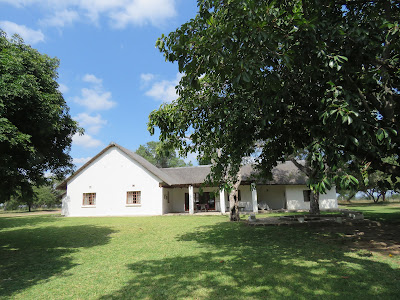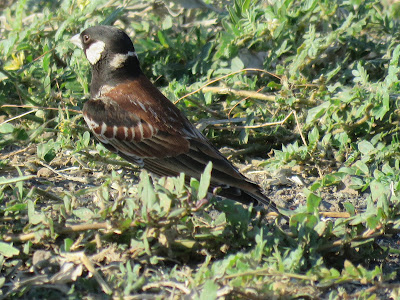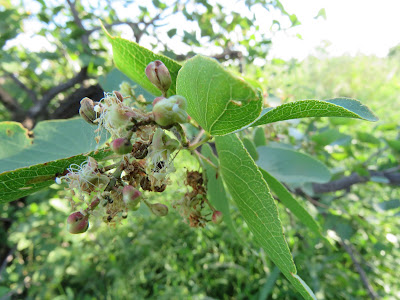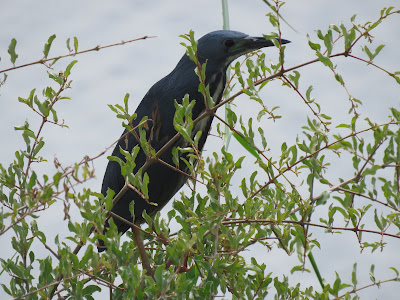...........and a stop on the road over the vlei heading towards Amersfoort early the next day provided a peaceful pre-sunrise scene.
Near the spot where I was hoping to locate Botha's lark, which I've only every seen once before, I happened upon a small group of spike-heeled larks, one of whom struck up this picture perfect pose which displays all the characteristics of the species to a tee - even down to the spike on the heel.
Having no luck in the valley, I climbed a small hill and was delighted to become reacquainted with a mini-euphorbia Euphorbia clavicaroides species that grows in these highveld regions forming a densely packed mass of cactus-like tufts that would look more at home in the sea. (Car keys by way of size comparison.)
...........and a pair of shelduck completed the picture - he sporting the grey head and her the white.
While looking for another local special the following morning, I was left puzzling over this chap which try as I may refused to become a yellow-breasted pipit in winter plumage and remained resolutely an African - though I'm hoping some boffin will let me know the error of my ways!
Some minor compensation was provided by this wonderful little Amur falcon female intent on breakfast.....
........and one of many red-capped larks that were foraging in the road for goodness knows what.
On a day visit to Kruger, I was particularly chuffed to find one of the smaller raptors of which there appear to be fewer and fewer even in the large reserves and this dark chanting goshawk certainly qualifies as one of the rarer species. Although very similar to their pale chanting cousins, their range and overall darker grey plumage differentiates them though there are a number of other species that could cause confusion.
It has been a long held contention of mine that grey plumage just makes for a spectacularly smart appearance, take this lesser grey shrike as a stunning example.
Just down the road in Whiteriver, Maralyn introduced me to Dr Jeremy Anderson, a noted local naturalist who had a secret to divulge - a nesting pair of what is probably the most elusive raptor in SA, the secretive and odd looking bat hawk. As a mostly crepuscular hunter with a taste for bats it is rarely seen unless you happen to know where a nest is located and as Jeremy has been keeping track of this particular pair for many years - bingo. The female was sitting tight on a nest and not visible but the male was - most unusually - roosting in a dead eucalypt close by.
Note this brilliant piece of deception, the eyelid is white so even when sleeping he appears to be on guard.
After driving the R40 between Nelspruit and Whiteriver more times than I can count I suddenly noticed this magical piece of artwork near Bundu Lodge - look out for it if you're ever on that stretch.
An invite from Maralyn's friends Sally and Graham Kay saw us heading for Timbavati Private Reserve for Easter where the two of us were accommodated in this magnificent old farm house, rather unkindly referred to as "The Barn".
Graham was our extremely capable and knowledgeable guide and chauffeured us to all corners of this incredible reserve with most of the birds and animals very relaxed and happy after good rains. Some of the 106 birds recorded included Natal spurfowl....................
............a jewel in the form of little bee-eater and a night sighting of a white-backed night heron which may not be as rare as it appears but is infrequently seen because of it's totally nocturnal habits.
As Easter coincides with full moon, a sundowner spot provided a perfect picture.............



















































